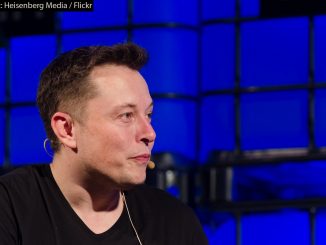- The Department of Government Efficiency (DOGE), led by Elon Musk, aims to cut $1 trillion in wasteful government spending, sparking both optimism and criticism as it scrutinizes federal agencies in its third month.
- Gary Cohn, former National Economic Council director, supports DOGE’s mission, highlighting redundant financial regulators – up to 10 for a typical U.S. trading bank compared to two in Europe and Asia – as a prime target for efficiency gains.
- While initial aggressive cuts have caused layoffs and reversals, Cohn advocates for a strategic rethink of government operations, favoring fewer, smarter regulators over simply eliminating agencies.

The Department of Government Efficiency, or DOGE, spearheaded by Tesla CEO Elon Musk, has ignited a firestorm of debate as it navigates its third month of operation. Tasked with slashing wasteful government spending, DOGE operates as a bold initiative under the current administration to scrutinize and streamline federal agencies. Its mission is clear: identify inefficiencies, eliminate redundancies, and reshape how taxpayer dollars are allocated. Yet, the approach has sparked both optimism and skepticism, with some lauding its ambition while others question its execution.
Gary Cohn, IBM (IBM) vice chair and former director of the National Economic Council, recently weighed in on DOGE’s efforts during an interview with Yahoo Finance’s Brian Sozzi on the Opening Bid podcast. Drawing from his extensive experience as a top Goldman Sachs (GS) executive and chief economic adviser in the first Trump administration, Cohn emphasized the pervasive issue of waste, fraud, and abuse in government operations. He argued that tackling these problems is not just desirable but essential. Having navigated complex financial landscapes and made tough calls on cost-cutting, Cohn sees parallels in Musk’s mission. He noted that in every business he’s encountered, the first step was always to pinpoint where money was being squandered and how processes could be optimized—a philosophy he believes applies to DOGE’s objectives.
The department’s early moves have been decisive, thrusting government entities under intense scrutiny. Layoffs and resignations have followed, though some decisions were later reversed, reflecting the chaotic pace of reform. Cohn offered a pragmatic take on this turbulence, suggesting that initial overhauls require a broad stroke – a “machete,” as he put it – before finer adjustments can be made with a “scalpel.” This perspective underscores the challenge DOGE faces: balancing aggressive cuts with the need to preserve essential functions. Critics argue the rapid pace risks destabilizing agencies, while supporters see it as a necessary shake-up to a bloated system.
Cohn’s insights extend beyond general efficiency to specific areas ripe for reform. He pointed to the financial services industry, where a typical trading bank contends with up to 10 regulators daily. By contrast, European and Asian banks operate under just two. Cohn questioned why the U.S. needs eight when three or four might suffice. He highlighted overlapping roles, such as the Securities and Exchange Commission (SEC) and the Commodity Futures Trading Commission (CFTC), both tasked with consumer protection alongside additional regulators duplicating the effort. This redundancy, he argued, dilutes efficiency and inflates costs—a microcosm of the broader governmental overlap DOGE aims to address.
Rather than advocating for wholesale elimination of agencies, Cohn proposed a more strategic rethink. He suggested starting from scratch, asking what an ideal regulatory framework would look like if built today. In his view, the answer would involve far fewer financial regulators than the current tally. This clean-sheet approach aligns with DOGE’s overarching goal of cutting $1 trillion, though the department’s initial $1 trillion target has drawn both praise for its audacity and criticism for its feasibility. Musk’s leadership has kept the initiative in the spotlight, amplifying its polarizing reception.
Cohn was careful to clarify his stance: he’s not against regulation itself but champions “smart regulation.” He cautioned that regulators, once established, often perpetuate their existence by seeking out problems to solve, even where none may exist.
Consolidating oversight into fewer, more effective bodies could streamline operations and reduce costs without sacrificing oversight—a principle that could guide DOGE’s broader and certainly just mission. As the department presses forward, its ability to translate such ideas into actionable cuts will likely determine its legacy.
Public sentiment remains divided. Optimists see DOGE as a long-overdue reckoning for government inefficiency, bolstered by voices like Cohn’s, who bring credibility and real-world expertise to the conversation. Skeptics, however, point to the rocky start – layoffs, reversals, and the sheer scale of the $1 trillion goal – as evidence, they say, of overreach. Three months in, DOGE’s impact is undeniable, but its ultimate success hinges on whether it can refine its machete swings into precise, sustainable reforms. For now, the debate rages on, with Musk and his team undeterred in their pursuit of a leaner government.
WallStreetPit does not provide investment advice. All rights reserved.
- Bulenox: Get 45% to 91% OFF ... Use Discount Code: UNO
- Risk Our Money Not Yours | Get 50% to 90% OFF ... Use Discount Code: MMBVBKSM
Disclaimer: This page contains affiliate links. If you choose to make a purchase after clicking a link, we may receive a commission at no additional cost to you. Thank you for your support!




Leave a Reply